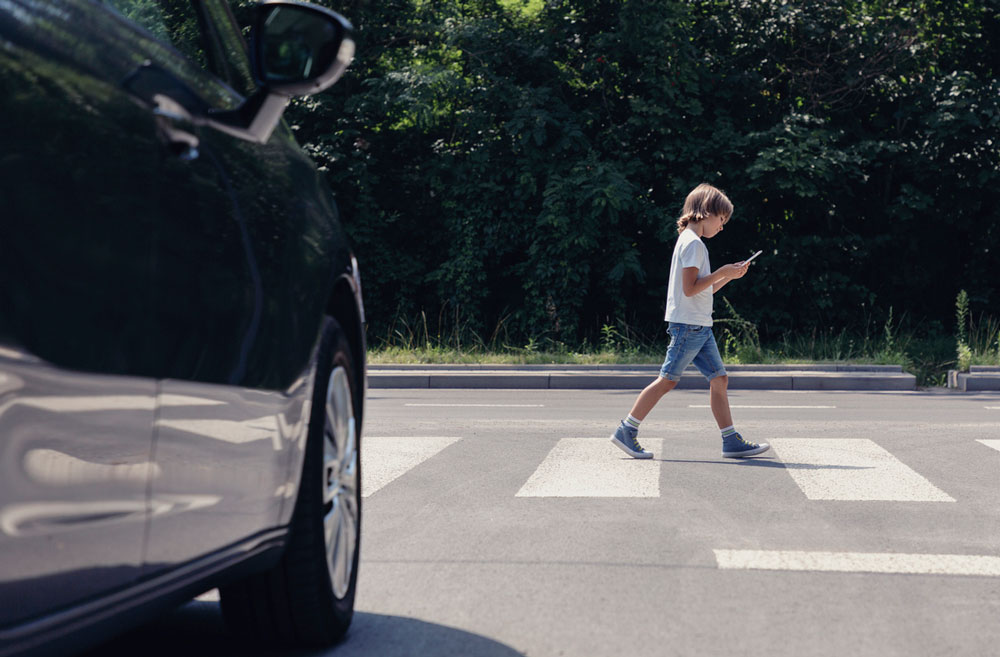
Traffic-related accidents are a leading cause of injury and death among children in the United States. Most parents are concerned about keeping their kids safe in the car or while riding a bike. However, walking can also be incredibly dangerous for children. In 2015, 15 percent of children killed in traffic accidents were pedestrians.
Fortunately, most child pedestrian accidents and injuries can be avoided. Children can learn how to practice safe walking habits. Here are four things to consider when you are teaching and emphasizing safe pedestrian habits.
Lead By Example
Your child looks up to you. They learn many of their mannerisms and habits by mimicking your behaviors. If you don’t practice safe pedestrian habits, your child probably won’t either. If you developed bad habits before your child was born, now’s the time to ditch them.
Retrain yourself to demonstrate safe walking habits. Take a few extra steps to reach the crosswalk. Ignore the temptation to cross against the traffic signal, even if the coast is clear. Your child will see your patience and dedication to safety and be more likely to follow in your footsteps.
Walk Against the Flow of Traffic
It is always best to use a sidewalk whenever one is available. However, some streets just don’t have sidewalks. If you live in a city, some sidewalks may be torn up and under construction. It’s important to teach your child what to do if sidewalks aren’t an option. The safest habit is to walk on the left-hand side of the road against the flow of traffic. You want your child to see oncoming traffic, and you want your child visible to drivers heading their way. This will reduce the risk of an accident.
Consider Your Child’s Perspective
One of the best pieces of advice you can give a young pedestrian is to “look both ways before crossing the street.” However, it’s important to consider how your child’s development and perspective could prevent them from crossing the street safely, even after they’ve looked both ways. Young children may not have strong perceptual ability skills. Perceptual ability is essentially how the brain makes sense of what we see. Can a child see a car in the distance and properly judge whether or not they can cross the street before the car approaches?
Your child will get better at assessing spatial relationships as they age. Until they’ve mastered the practice, it’s important to hold your child’s hand whenever you are waiting to cross the street. Talk with your child about oncoming traffic and ask them to tell you when they think it is safe to cross.
Be a Defensive Walker, Particularly At Intersections
Is it safe to cross the road just because the signal says “walk” or lights up with a walking figure? Does a red light always mean that the coast is clear? Does being in a crosswalk guarantee safety? No, no, and no. These are safety features that can help pedestrians navigate the roads safely. However, there is no guarantee that drivers on the road will pay attention or use caution when approaching an intersection. In fact, 40 percent of all traffic accidents happen at intersections. It’s important for pedestrians to be extremely cautious. Your child should never trust that others will stop or see them. It is always best to be patient.
About the Author: Brian White is a personal injury lawyer and founder of Attorney Brian White & Associates, P.C. in Houston, TX. He has spent almost 20 years helping people injured due to someone else’s negligence. He is a frequent contributor to various new outlets and legal publications.



























